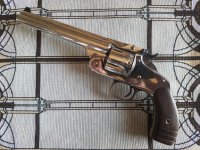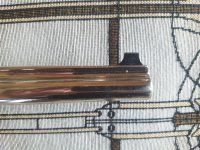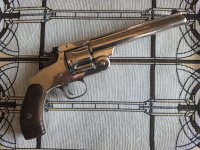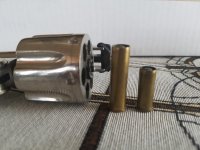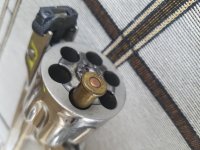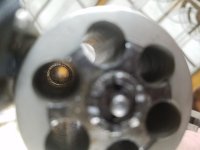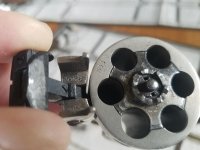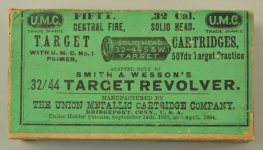Boulder350
Member
Here is a 32-44 target revolver I own. It was my first large frame revolver purchase and didn't know very much about them at the time. It is refinished and has matching serial numbers on the frame, barrel, and the cylinder. There is no number on the latch. The serial number is 3xx. There is a 3 digit number under the left grip indicating it was sent back to the factory for work 1/17 (or maybe 11/7). It has 6 notches filed in the end of the barrel. Maybe it indicates the number of shooting matches won with the gun?
At the time I bought it it was listed as a 38-44. Thought is was a 38 until I took it to the gun smith and he said it was a 32. That was about 1 year after I bought it so there was nothing I could do. Sent away for the historical letter and it came back confirming it is a 32-44 that was sent to G.W. Beard & Son Co on January 21st, 1892.
Since working on my model of 91 project barrel in 32 caliber I started looking at the Model 3 revolver a little closer. Bought a 32-44 round and tried to chamber it in the New Model Number 3 but the entire 32-44 round slid right through the cylinder. Took out the caliper and measured the cylinder. They are all bored straight through to about .380, large enough to chamber a 38 special round. The end of the barrel measures about .318 which is correct for the 32-44 round.
Any thoughts on why the cylinder was bored out?
At the time I bought it it was listed as a 38-44. Thought is was a 38 until I took it to the gun smith and he said it was a 32. That was about 1 year after I bought it so there was nothing I could do. Sent away for the historical letter and it came back confirming it is a 32-44 that was sent to G.W. Beard & Son Co on January 21st, 1892.
Since working on my model of 91 project barrel in 32 caliber I started looking at the Model 3 revolver a little closer. Bought a 32-44 round and tried to chamber it in the New Model Number 3 but the entire 32-44 round slid right through the cylinder. Took out the caliper and measured the cylinder. They are all bored straight through to about .380, large enough to chamber a 38 special round. The end of the barrel measures about .318 which is correct for the 32-44 round.
Any thoughts on why the cylinder was bored out?

